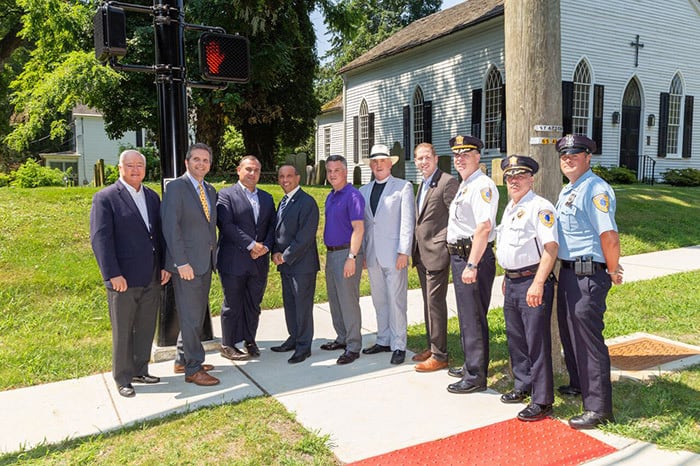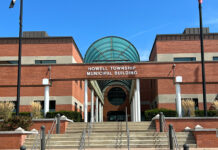
FREEHOLD – Monmouth County recently hosted a unique event: a traffic light activation ceremony. The event was meant to unveil the new and improved intersection at County Route 50 (Church Street) and County Route 50 (Kings Highway) in the Middletown Village Historic District.
On July 2, officials gathered at the site which now includes four matte black traffic lights, peanut stone curbing, pedestrian crosswalks, ADA compliant curb ramps and a widened roadway to allow for a left-turning lane onto Church Street.
The project was designed to lessen the burden on motorists who use the intersection as part of their main commute, according to officials.
“There is no question that drivers will see a dramatic difference,” said Freeholder Director Thomas A. Arnone. “Just those little improvements will be good for traffic flow and pedestrian safety.”

Following nearly 20 years of traffic issues in the area, the project officially began construction on February 1 of this year. Part of the reason for the delay was officials’ desire to perfect the plan in a way that would improve the roadways while preserving the history of the district. Construction was performed by Lucas Brothers of Morganville.
“It has been tricky to accommodate modern needs while preserving our historic roots, but the County did a commendable job minimizing the impact to the historic district,” said Freeholder Gerry P. Scharfenberger, Ph.D., former council member of Middletown. “This project has had a high standard for compromise since the beginning.”

The matte black traffic signals are a common style used throughout New Jersey in upgraded historic district areas. The project also installed 1,261 linear feet of peanut stone to line the roadways, maintaining that old-fashioned feel.
“Drivers and pedestrians are safer and happier and the historical roots still remain intact. It couldn’t have worked out better,” Scharfenberger added.






